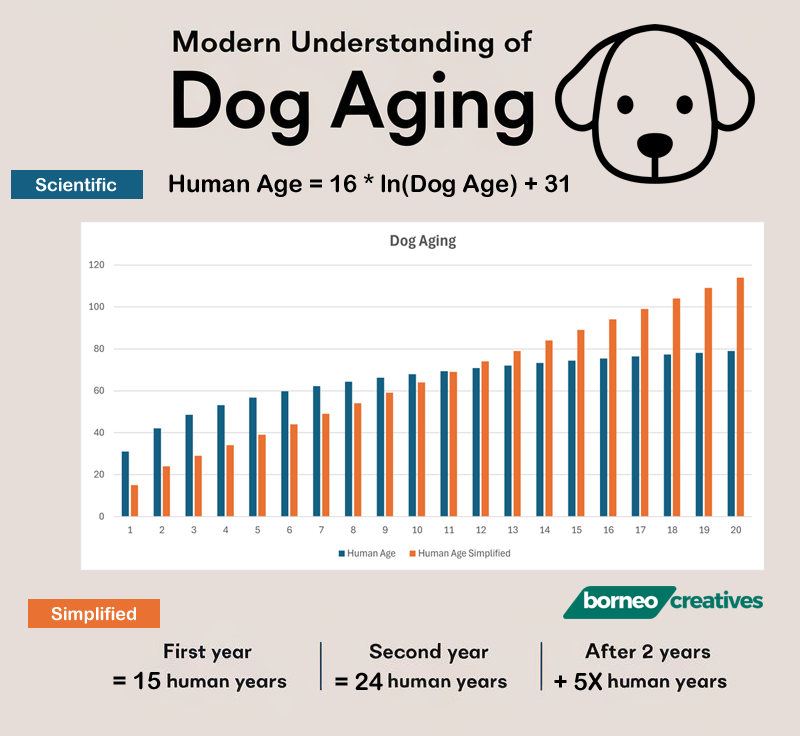The common belief that one dog year is equivalent to seven human years is a widely perpetuated myth. Recent research debunked this simplistic rule of thumb showing that dogs age at a different rate than humans, and the aging process varies significantly among different breeds and sizes of dogs.
Origins and Flaws of the “Seven-Year Rule”
The “seven-year rule” originated as a rough estimate based on the average lifespan of humans (around 70 years) and dogs (about 10 years). This ratio was convenient for pet owners to understand how quickly dogs age compared to humans, and it served as a reminder for regular veterinary check-ups. However, this method does not accurately reflect the biological aging process of dogs.
Modern Understanding of Dog Aging
Recent studies have shown that dogs age much faster in their early years and that the rate of aging slows down as they get older. For example, the first year of a dog’s life is equivalent to 15 human years, and the second year is about 9 human years. After the first two years, each dog year is equivalent to five human years.
Breed and Size Variations
The rate at which dogs age also depends on their breed and size. Smaller dogs tend to live longer, and age more slowly compared to larger dogs. For instance, a small dog might age at a different rate than a large or giant breed, thus affecting their age calculation in “human years”.
New Scientific Approaches
A more accurate method for calculating a dog’s age in human years involves using an “epigenetic clock.” Researchers at the University of California, San Diego, developed a formula based on changes in DNA methylation patterns, which occur as dogs age. This formula is more precise and considers the biological processes of aging. The formula is:
Human Age = 16 * ln(Dog Age) + 31
This formula suggests that a one-year-old dog is like a 31-year-old human, and a two-year-old dog is akin to a 42-year-old human. In conclusion, while the “seven-year rule” is easy to remember, it is not an accurate reflection of how dogs age. Understanding the nuances of canine aging, including breed and size differences, provides a more realistic view of a dog’s age in human years.
How About For Cats?
The notion that one cat year equals seven human years is a myth, like the misconception about dog years. The aging process of cats is more complex and varies significantly, especially in the early years of their lives.
Accurate Cat-to-Human Age Conversion
- First Year: A cat’s first year is equivalent to approximately 15 human years. This rapid aging reflects the significant developmental milestones that occur in a cat’s early life.
- Second Year: The second year of a cat’s life adds about nine more human years, making a two-year-old cat equivalent to a 24-year-old human.
- Subsequent Years: After the second year, each additional cat year is equivalent to four human years. This means a three-year-old cat would be about 28 in human years, a four-year-old cat about 32.
Lifespan and Health Considerations
Cats live longer than dogs, with an average lifespan ranging from 13 to 20 years, though some cats can live into their mid-20s or beyond. As cats age, they may develop age-related health issues like those in humans, such as arthritis, kidney disease, and dental problems. Understanding the more accurate conversion of cat years to human years helps pet owners better monitor their cat’s health and anticipate age-related changes. This knowledge can guide appropriate care and veterinary attention as cats transition through different life stages.

